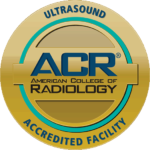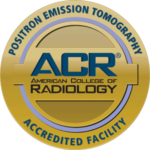Oncologic Molecular Imaging is used to evaluate the presence of cancer. This unique type of imaging uses Positron Emission Technology (PET) to provide information that often cannot be obtained using more traditional diagnostic modalities, such as Digital Radiography (X-RAY) or Magnetic Resonance Imaging (MRI), and offers the potential to identify cancer at its earliest stages, and effectiveness of treatment.

The more traditional diagnostic modalities capture images of the body’s anatomy or physical structure so any alteration or change to the body’s structure caused by injury or disease can be seen and diagnosed. However, often in early disease, such as cancer, there have been no changes to anatomy or the physical structure of the body. Rather, the disease or cancer has only started to change the body’s cells (metabolic alterations). Molecular Imaging allows radiologists to see these changes, evaluate how the body is functioning and measure the body’s chemical and biological processes. Therefore, it is the modality of choice for evaluation of cancer, certain infections, inflammation or poor functioning of an organ.
Molecular Imaging uses small amounts of a safe low dose radioactive glucose (sugar) with a PET scan and a CT scan to:
- Find presence of cancer;
- Find the right place to do a biopsy;
- Find out if the cancer treatment is working;
- Evaluate how well treatment has worked; and
- Plan radiation or chemo-therapy.
The radioactive glucose is typically injected into the bloodstream and travels through the area being examined. Organs and tissues pick up the substance and areas/cells that use more energy pick up more radioactive solution. Cancer cells pick up a lot, because they tend to use more energy than healthy cells. The PET scan shows where the radioactive substance is in your body.
The CT scan takes pictures of the inside of the body using x-rays from different angles and a computer generates detailed 3-dimensional images that show anything abnormal, including tumors.
A radiologist then takes the images produced by the PET scan and CT scan and puts them on top of each other to better determine the location, source, size and malignancy of the disease.















